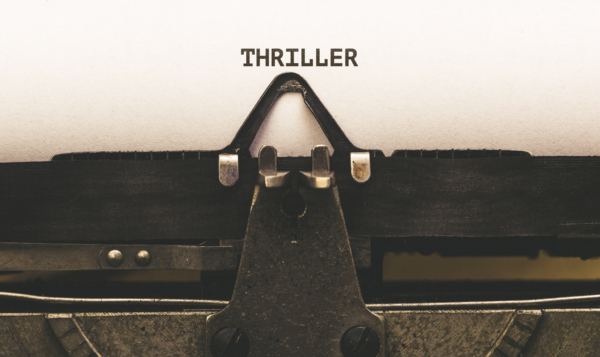Every writer dreams of crafting a story that keeps readers hooked from page one to “The End.” But without a well-developed plot and a clear story structure, even the most promising ideas can lose steam. What is plot development anyway? Think of these arcs as the road map guiding your story from start to finish, and without it, you might end up stuck in a literary traffic jam. Is it a linear plot development? Is it a non linear plot development? Which direction does that plot want to go? Which direction will be most useful for your story?
To help you avoid those narrative potholes, we’ve outlined 10 plot moving strategies guaranteed to keep your readers turning pages faster than they scroll through their social media feeds.
Plot Development Definition—The Backbone of Your Story
Plot development is the process of weaving together a series of events that form the backbone of your story. Think of it as the skeleton that holds everything in place, giving your narrative structure and direction. A compelling narrative arc typically includes a beginning, middle, and end, each filled with conflicts, complications, and challenges that keep readers on the edge of their seats.
Imagine your plot as a rollercoaster ride. The initial climb builds anticipation, the twists and turns keep the adrenaline pumping, and the final descent provides a satisfying conclusion. A well-developed plot ensures that your story has a clear progression of events, building tension and conflict along the way. This not only keeps readers engaged but also gives your story a sense of purpose and direction. So, buckle up and make sure your framework is as thrilling as the ride itself.
Your Publishing Journey Awaits – Start Now1. Build a Strong Plot Structure—It’s Your Story’s Foundation
You wouldn’t build a house without a blueprint, right? The same goes for your story. Introducing the main character early on is crucial for establishing the story’s foundation and engaging the reader. The three-act structure is a timeless, foolproof foundation: beginning, middle, and end. It’s simple, but boy, is it effective. The first act sets the stage, the second act raises the stakes, and the third delivers that satisfying resolution—like a literary meal with a delicious dessert.
Take Star Wars, as a great plot development example. It masterfully uses the three-act structure to build tension and excitement while leaving no loose ends (except for the whole “I am your father” thing). Using this structure keeps your plot from wandering off into the dreaded “plot hole abyss.”
2. Explore Popular Plot Structures—Freytag’s Pyramid and The Hero’s Journey
Two of the most popular frameworks for plot structures are Freytag’s Pyramid and The Hero’s Journey. Freytag’s Pyramid, inspired by classical Greek tragedies, is a five-point dramatic structure that includes exposition, rising action, climax, falling action, and resolution. Think of it as a well-orchestrated symphony, where each movement builds upon the last, leading to a powerful crescendo and a satisfying conclusion.
On the other hand, The Hero’s Journey is a storytelling pattern that recurs in myths and legends across cultures. This 12-step process takes the hero from their ordinary world to the call to adventure, through trials and tribulations, and finally to a triumphant return with newfound wisdom or an elixir. It’s the classic tale of transformation, where the hero faces challenges, meets allies and enemies, and ultimately emerges changed.
Both structures emphasize the importance of rising action, where the stakes are continually raised, keeping readers invested in the outcome. They are both examples of linear plot development and non linear plot development which can help keep the reader on track with the story. Whether you choose Freytag’s Pyramid or The Hero’s Journey, these frameworks can help you craft a story that resonates with readers on a deep, emotional level.
2. Develop Your Characters—They’re the Engines That Drive Your Plot
Great characters are the heart of any story, and character development is crucial in making them compelling. Readers don’t just want to follow what happens to your plot—they want to see what happens to your characters. From relatable heroes to sinister villains, characters with depth and dimension make your plot all the more engaging.
Imagine your characters as the engine of a car. Without a finely tuned engine, your story won’t go anywhere. Breaking Bad is a classic example where the transformation of Walter White keeps the audience on the edge of their seat. When your character grows, changes, and evolves, your readers stay invested.
3. Create Memorable Character Arcs—Because Static Characters are Boring
A character arc is the backbone of an engaging narrative. Understanding character traits is crucial as they form the foundation for developing these arcs. Your protagonist should be different at the end of the story than at the beginning. Whether they gain confidence, confront their inner demons, or develop a newfound sense of purpose, a well-done character arc adds emotional depth.
In commercial fiction, The Hunger Games offers a stellar example with Katniss Everdeen, who evolves from a survivalist in District 12 to a symbol of rebellion. Your readers are here for the ride—don’t disappoint them by keeping your characters stuck in neutral.
4. Build Tension and Conflict—The Life Blood of Your Plot
Conflict is the fuel that powers your plot events. Without it, your story would be like a rollercoaster that never climbs a hill. Build rising action into your story to maintain reader engagement—whether it’s an internal struggle or external showdown, the tension keeps your readers at the edge of their seats.
Think of it like this: Every time you introduce conflict, you’re raising the stakes. If everything is smooth sailing for your characters, your readers won’t feel invested. Remember, even Romeo and Juliet needed a bit of family drama to become a masterpiece.
5. Introduce a Major Turning Point—Keep Readers Guessing
Turning points are those glorious moments that change the game, often marked by major events. It’s when your characters face a decision that reshapes everything and there’s no turning back. Without a few well-placed twists, your plot can feel like it’s just going through the motions.
Imagine Harry Potter finding out he’s a Horcrux—it flips the narrative on its head. A well-timed plot twist can give your story that “OMG” moment, making it all the more engaging.
6. Patch Up Plot Holes and Tie Up Loose Ends—Your Readers Deserve It
There’s nothing worse than reading a story and hitting a plot hole the size of the Grand Canyon. Inconsistent timelines, forgotten details, or unresolved conflicts can derail your story faster than you can say “rewrite.” Developing memorable main characters is crucial, as their growth and challenges can help resolve plot holes and tie up loose ends.
To avoid this, track every subplot and loose end like a detective. Tie them all up by the end, or risk having readers leave reviews like, “Great story, but what happened to the missing briefcase?” Loose ends may work for some thrillers, but in most cases, you’ll want to resolve them.
7. Use Subplots to Enrich Your Main Plot—Think of Them as Plot Vitamins
A well-crafted subplot is like adding spice to a good meal—it enhances the flavor without overwhelming it. Having students write about subplots helps them understand their role in enriching the main plot. Subplots add depth to your main storyline, making your world feel more layered and lived-in.
In The Great Gatsby, the romantic subplot between Tom Buchanan and Myrtle Wilson creates added tension and mirrors the main themes of the story. A subplot done well enriches the main plot, giving it additional complexity and keeping readers engaged without overshadowing the main events.
8. Incorporate Themes and Motifs—Give Your Story Depth
Every great story carries deeper meanings. The ‘hero’s journey’ is a crucial narrative framework that helps in developing these themes and motifs, illustrating the protagonist’s path and its impact on the story. Themes are the big ideas behind your narrative, and motifs are the recurring elements that reinforce those ideas. Whether it’s the theme of power in Game of Thrones or the motif of sacrifice in The Lord of the Rings, these elements make a story resonate long after it’s over.
Integrating a strong theme can help your story leave a lasting impression, making your readers think, “There was more to this story than meets the eye.”
9. Create a Satisfying Resolution—End With a Bang, Not a Fizzle
You’ve spent all this time building up your plot, so don’t drop the ball in the final act. Your resolution should be satisfying and tie up the story while still leaving readers with something to think about. It’s the last taste your readers will savor, so make it a good one.
If you’ve built up enough tension and intrigue, the resolution should feel earned—think of the “ring destruction” scene in The Return of the King. It gives closure but also leaves room for reflection.
10. Learn From Other Writers—There’s Always More to Discover
As with any craft, learning from others can sharpen your own skills. Read widely, study what works (and doesn’t), and apply those lessons to your own writing. Analyzing how other authors build their plots and characters is like being handed a treasure map to narrative gold. Finding strong plot development examples that speak to you as a reader can help you tremendously as a writer.
Whether it’s from short stories, novels, or even movies, there’s always something new to learn. And remember, the journey to becoming a better writer never truly ends—keep honing your craft!
Common Plot Development Mistakes—Avoiding Pitfalls
Even the most seasoned writers can fall into common plot construction traps. One major pitfall is creating a plot that’s too predictable. If readers can see every twist and turn coming from a mile away, they’re likely to lose interest. To keep your story fresh, introduce unexpected plot points and avoid clichés.
Another mistake is neglecting subplots or making them irrelevant to the main story. Subplots should enrich the main plot, adding layers and depth without overshadowing the primary narrative. Failing to establish clear stakes can also make your story feel flat. Readers need to understand what’s at risk for your characters to feel invested in the outcome.
Overusing coincidences to resolve conflicts is another no-no. It can feel like a cop-out and frustrate readers who prefer logical, character-driven resolutions. Lastly, ensure that your plot evolves organically from your characters’ decisions and growth. A disjointed narrative can leave readers feeling disconnected from the story.
Tools and Resources for Story Pogression—Enhance Your Writing Process
Developing a compelling plot doesn’t have to be a solitary endeavor. There are numerous tools and resources available to help you along the way. Writing exercises and prompts can spark new ideas and help you practice your storyline evolution skills. Analyzing the plots of successful stories can provide valuable insights into effective storytelling techniques.
Seeking feedback from other writers or readers can offer fresh perspectives on your plot’s strengths and weaknesses. Online resources, such as writing blogs and websites, are treasure troves of tips and advice on plot development examples. Additionally, writing software and apps can help you organize and structure your plot, making it easier to keep track of plot elements and ensure a cohesive narrative.
Whether you’re a seasoned writer or just starting these tools and resources can enhance your writing process, helping you craft a story that captivates readers from start to finish.
Why Audiobooks Put Your Plot Development to the Test
It’s one thing to keep readers engaged on the page—it’s another to keep them hooked when they’re listening. Audiobooks strip away the safety net of skimming or flipping back; your plot has to flow seamlessly in real time. If your story meanders, listeners will notice instantly. A well-structured plot with clear arcs becomes essential, because pacing in an audiobook can make or break the experience.
Think of it like this: when you drive without a GPS, you might backtrack or stop to check the map. But on a guided audio tour, the journey has to feel natural and continuous. That’s how your audiobook listeners experience your plot: they need strong direction, smooth transitions, and a sense of forward momentum. Whether you’re building a linear progression or weaving a non-linear narrative, clarity and rhythm are the keys to making sure your audience doesn’t tune out halfway through.
Turning your manuscript into a listening experience with audiobook services highlights just how powerful effective plot development is—not just for turning pages, but for keeping ears tuned in until the very last word.
Start Crafting Your Masterpiece
Plotting may seem daunting, but with the right strategies, it’s entirely within your grasp. From structuring your story with precision to developing unforgettable characters, these ten plot development strategies will not only elevate your writing but keep your readers hooked until the last page.
And if you’re ready to take your manuscript to the next level, why not consider Spines? At Spines, we blend advanced AI with human expertise to make your publishing process as smooth as possible. With our intuitive platform, you can focus on what you do best—writing—while we take care of the rest. Ready to start your publishing journey? Let Spines help you turn your ideas into a published masterpiece, with a free 30 day trial!
FAQ: Plot Development Definition and Examples
Q1: What are the 5 elements of plot development?
The five key elements of plot development are exposition, rising action, climax, falling action, and resolution. These components structure both linear plot development and non linear plot development, ensuring a compelling story arc. The exposition introduces the setting and characters, the rising action builds tension, the climax is the turning point, the falling action resolves conflicts, and the resolution concludes the narrative.
Q2: What is a development plot?
A development plot refers to how a story’s events unfold and progress, guiding the reader through a structured narrative. It aligns with the narrative definition, encompassing both chronological storytelling, where events follow a sequential order, and dynamic storytelling, where events are presented in a varied sequence through flashbacks or multiple perspectives.
Q3: Are plot development and summary the same?
No, plot development and a summary are not the same. Plot development focuses on the structure, pacing, and progression of a story, ensuring it remains engaging. A summary, on the other hand, simply condenses the story’s events without analyzing how the narrative unfolds or builds tension. Strong storyline evolution examples demonstrate how conflicts, twists, and character growth shape the reader’s experience.
Q4: What is character plot development?
Character plot development refers to how a character evolves throughout the story, intertwined with the construction of the plot. As the plot progresses, characters face challenges that shape their decisions, growth, and relationships – in that regard, well-developed characters contribute to an engaging, dynamic story.
Q5: What is the 3-act 9-block structure?
The 3-act 9-block structure is a detailed approach to story frameworks, dividing a story into three main acts: setup, confrontation, and resolution. Each act is further divided into three sections, ensuring a well-paced narrative.
Q6: How do you analyze actual thematic progression?
To analyze progression, examine how the story unfolds, including its structure, pacing, and key turning points. Identify whether the narrative follows a sequential structure, where events unfold in order, or a dynamic structure, where events are presented through flashbacks or alternate timelines. Consider how conflicts, character arcs, and resolutions contribute to an engaging story..








